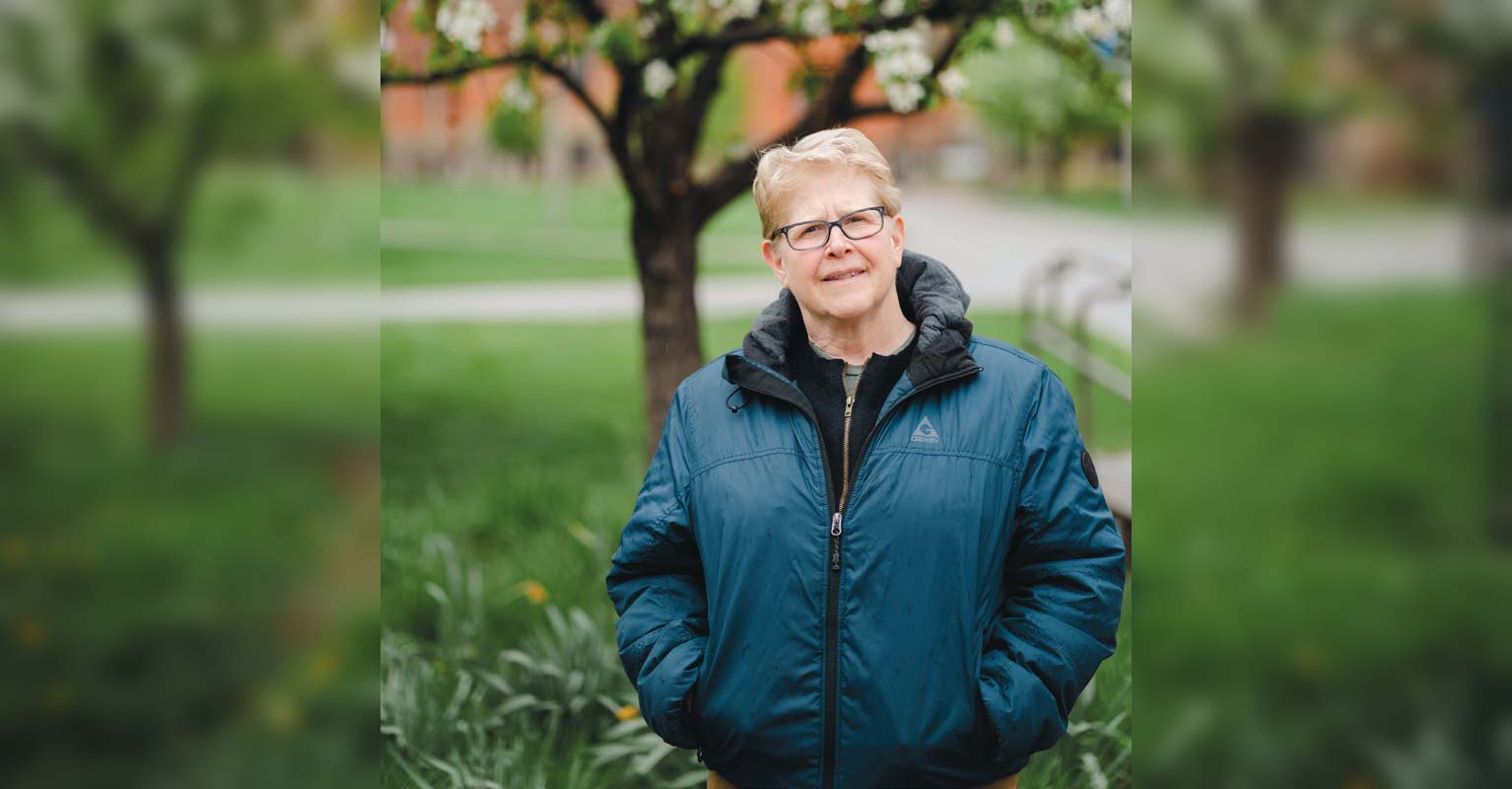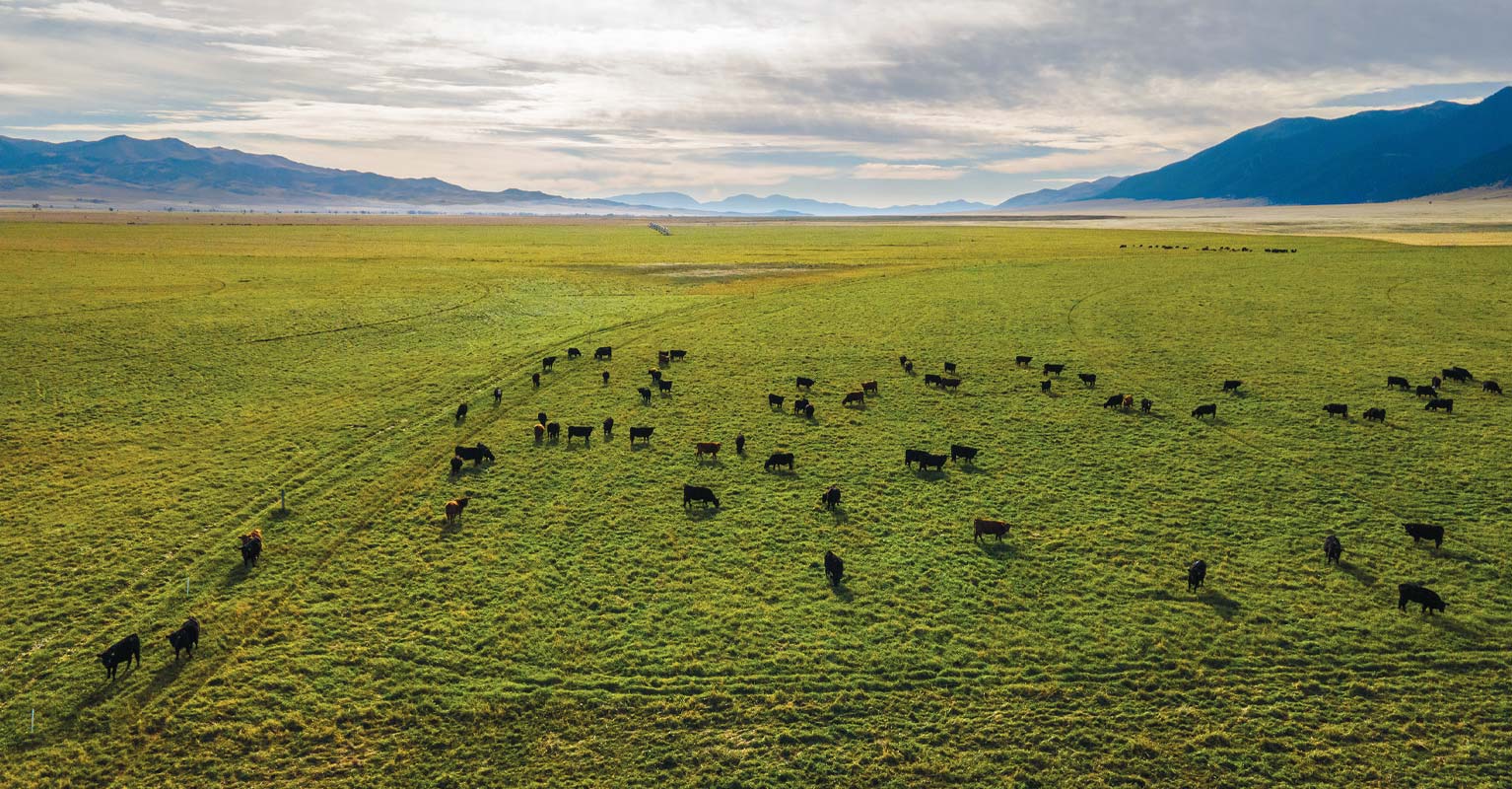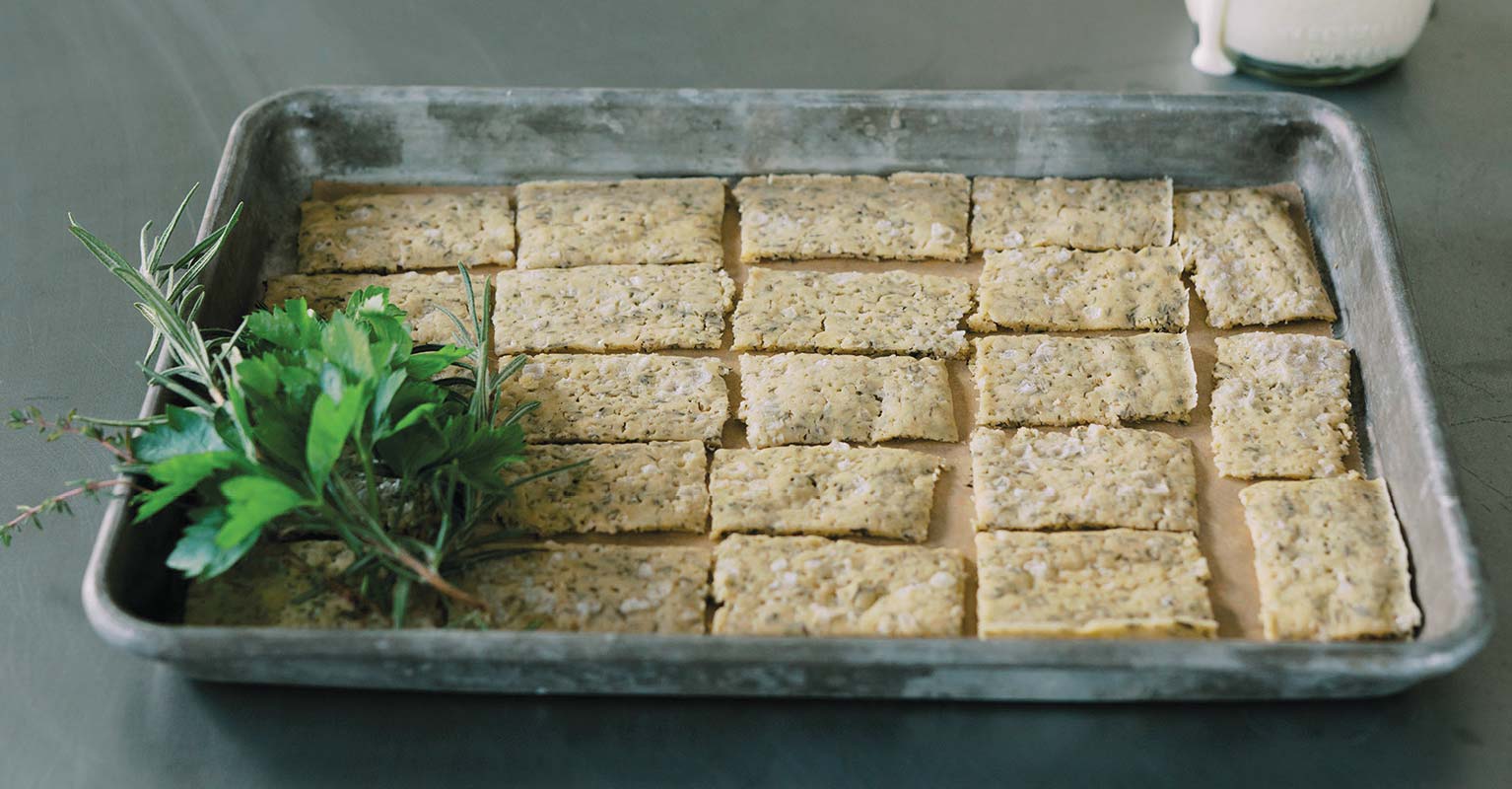CREATING RESILIENT LANDSCAPES
Five minutes into meeting Chia and Ivan Thrane, I’m admiring a series of large woven willow baskets that Chia has made, which are resting by the woodstove. As I appreciate the craftsmanship, Ivan points out a handmade chair in the corner that he’s built out of willow and chokecherry. I’m amazed not only by the thought and skill, but the fact that they’ve done this in their spare time. They tell me that the willow has come as a product of their work. Their goats, when on pasture rotation, have eaten some of the plant, which, in turn, left a new growth ring of willow behind.
I’m immediately struck by how resilient willows can be (if you cut down one part of a mature plant, it will send up multiple suckers) and it feels like an important metaphor for their business, Healthy Meadows, which helps encourage both holistically healthy landscapes and people. By creating resilient landscapes, we can offer alternatives to chemical management of weeds, increase biodiversity, and help establish a more balanced ecosystem.
Healthy Meadows is an operation created to solve the invasive noxious weed challenge that many landowners face. As the Thranes put it on their website, “With invasive weeds’ innate ability to colonize degraded landscapes, it only made sense to find an animal that was as stubborn and persistent as the very plants they love to eat.
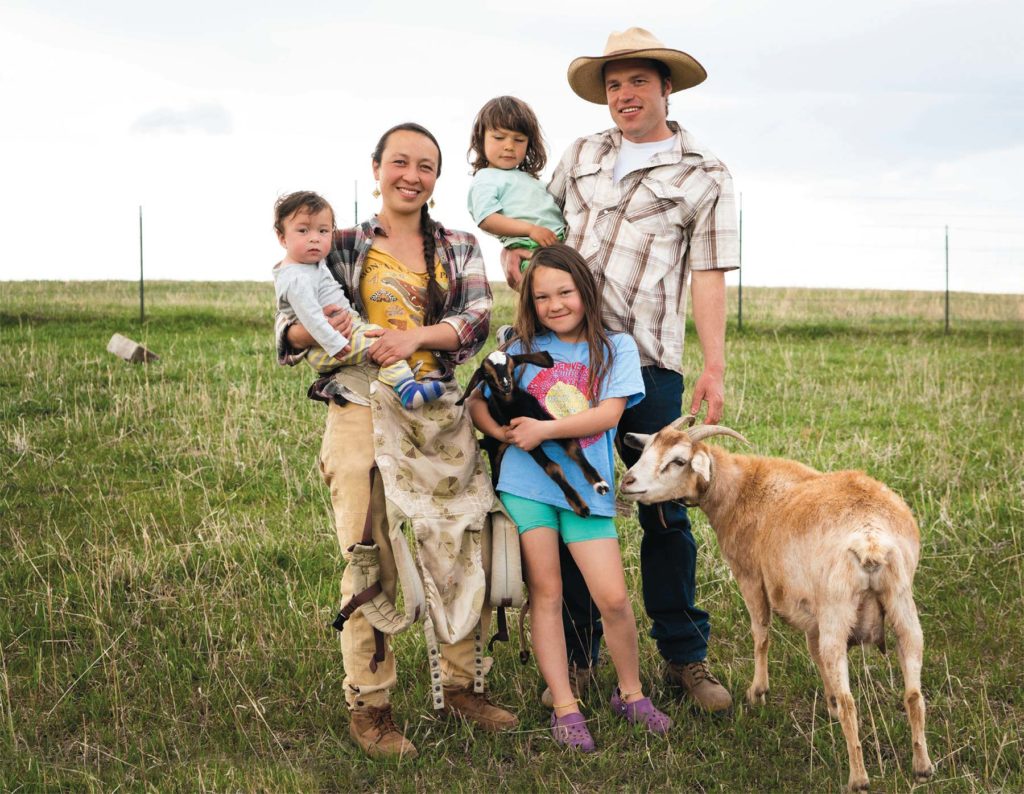
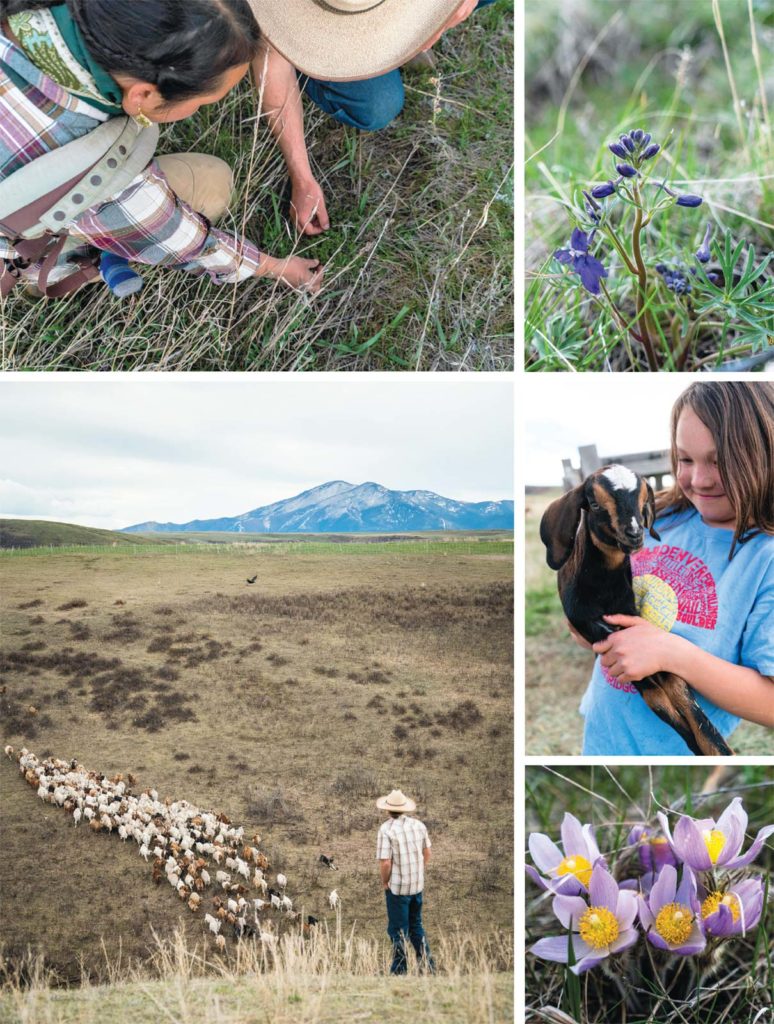
We use goats to manage noxious weeds and help revitalize your land. Our vision is to support each landowner’s specific goals regarding their land.”
Along with their three kids—Yarrow, Axel, and Juniper— Ivan and Chia graze their goats on their 150 acres outside of Red Lodge, Montana, but will bring the herd to other properties during the year to do prescriptive grazing. The 250 goats they own are a meat and cashmere mix. Having a connection to nature was important to both of them as they grew up, but neither was told that they could do anything for work that centered around the nature they loved.
Ivan, Chia, and I start to talk about what it means to love something—land in particular—and what a responsibility it is. It’s not something they have taken lightly. The way that they live their lives is intrinsically tied to a landscape that feeds them in return.
The land they own was a gift from Ivan’s grandmother after Ivan finished school. Every year growing up, Ivan traveled from the Cumberland Gap area to visit his grandmother on this ranch. It was originally a much larger parcel that his great-grandparents had owned, but his grandmother had held the last parcel. She passed it along to Ivan with his promise that he would take care of it.
As Ivan was growing up, he looked up to members of his family who ranched, but as he says, “mak[ing] a living these days with animals is hard. The price ranchers get for their animals hardly reflects all the other expenses, let alone the labor, especially when you are selling to the commodity market. What we’ve found is that you have to be creative with your operation, and the goats have helped us do that. We are raising meat, but also providing a land management service that is much needed.”
In both large and small landscapes, a landowner’s inclination to get rid of weeds is often to spray herbicide. By grazing the goat herd with moveable fencing, Healthy Meadows can graze down weeds like Canadian thistle, leafy spurge, spotted knapweed, and houndstongue without introducing chemicals to the land. This grazing cuts off energy to the plant and prevents the weed from going to seed. During the process of grazing, the goats naturally fertilize the ground by leaving manure behind. Grazing can also offer natural solutions to fire suppression by decreasing the amount of fuel available on a landscape.
“Because we have been working with natural systems to manage land and haven’t had the crutch of using chemicals, we have been able to learn a lot more about what makes a healthy animal, as well as fertile and productive land,” Chia says. “We started out with a more single-minded goal of eradicating weeds, but over the years that we’ve been doing this, we’ve learned that it is more important to work toward a healthy ecosystem, and all the other parts come into balance. A healthy ecosystem supports a diversity of life, from the soil microorganisms up to the plants—there should be way more than just grass—the insects, the gophers and voles, the songbirds, birds of prey and other predators, and finally up to humans and our livestock. Then we get to share in the health and natural abundance as well.”
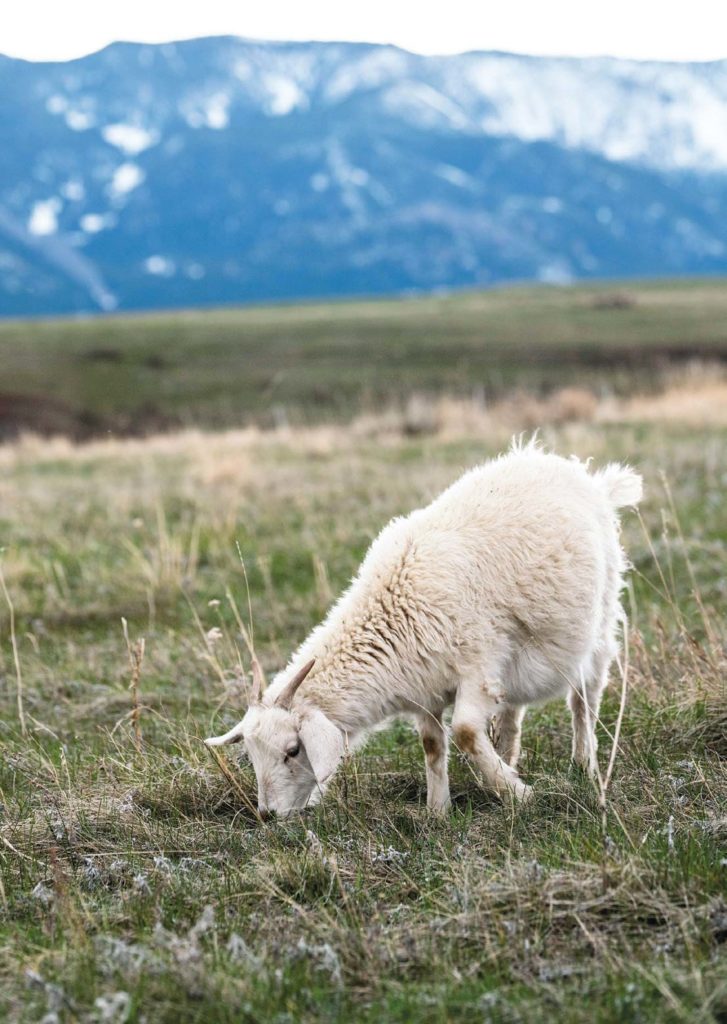
“A healthy ecosystem supports a diversity of life, from the soil microorganisms up to the plants—there should be way more than just grass—the insects, the gophers and voles, the songbirds, birds of prey and other predators, and finally up to humans and our livestock. Then we get to share in the health and natural abundance as well.” —Chia Thrane
Further embracing the responsibility of land stewardship, Ivan and Chia are hoping to add a large focus on education to the mission of Healthy Meadows. This includes everything from helping people learn about breaking down the whole goat for cooking, to learning more about the plants that inhabit our landscapes. The Thranes currently lead seasonal edible and medicinal plant walks on the land and this fall they will be offering a course on holistic butchering.
Ivan refers to holistic butchering as “relationship meat,” meaning he hopes it helps others develop relationships to the full process through participation. As the Thranes describe it, “it is a butchery class in which you get to take home local meat from an animal that you’ve seen take their last delicious bite of pasture, you’ve learned about the incredible complexity of their body, and you can appreciate all the resources that this one animal has to offer: not just its meat, but its bones, its organs, its hide, its horns, even its hooves. It’s the antithesis of mass-produced, confinement-raised, plastic-wrapped meat.”
Ivan and Chia want to see people reclaim a skill that most people, in an earlier time, knew and were familiar with. After watching the goats come up the hill and move onto new pasture, we identify some wildflowers and grasses and again, our conversation circles back to what it means to love the land.
“Spending summers with my grandmother on [this] ranch helped me build a relationship with this land—a relationship that has only grown as we’ve been here,” Ivan says. “When my grandmother gifted me her portion of the family ranch, one of the few things that she asked of me was to ‘only live there if you love it.’
“What does it mean to love a piece of land?” he asks. “It has taken years to understand. In some ways it means to see the land for all its history, its flaws, wounds, and imperfections as a mirror of ourselves. In seeing the land as a mirror of oneself, you make a choice in how to care for yourself and care for the land. It can have tremendous challenges and opportunities, but in the end, it becomes a joyous relationship where your life comes into rhythm with the four seasons, the emergence of the first spring pasque flowers and the return of the meadowlarks. It is a responsibility to love a piece of land; it requires a lot of listening and learning.”


